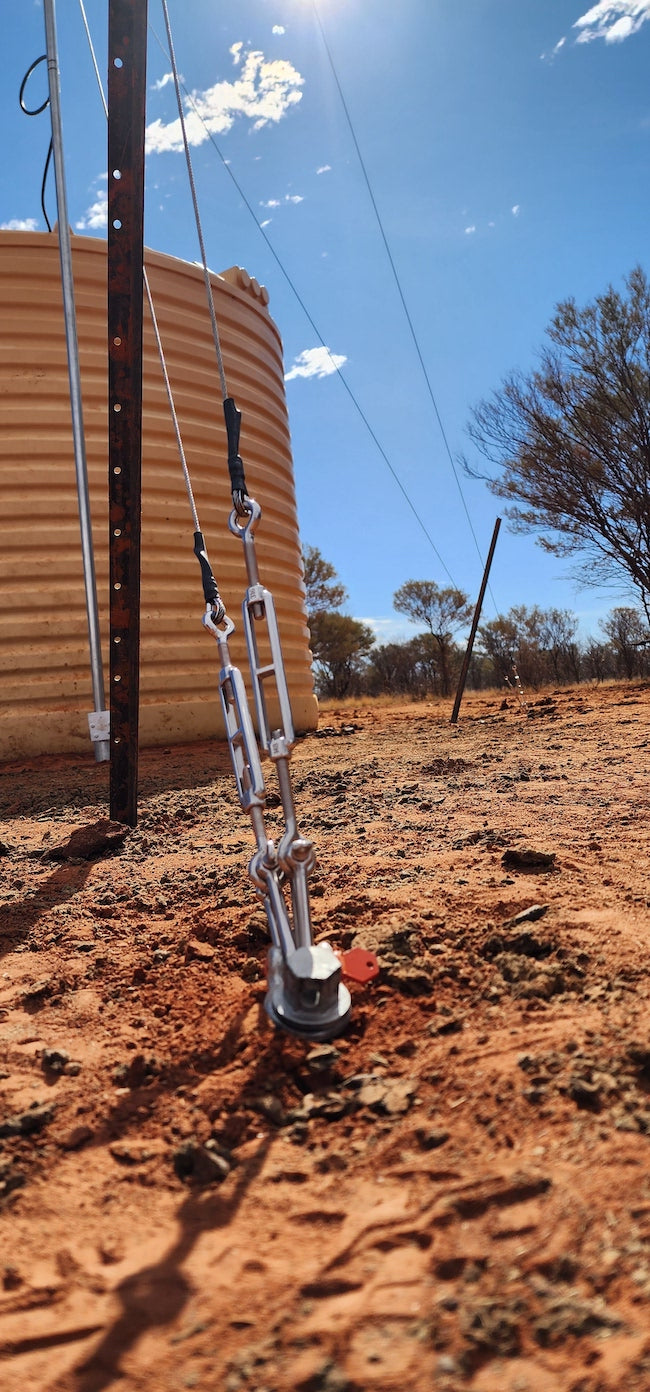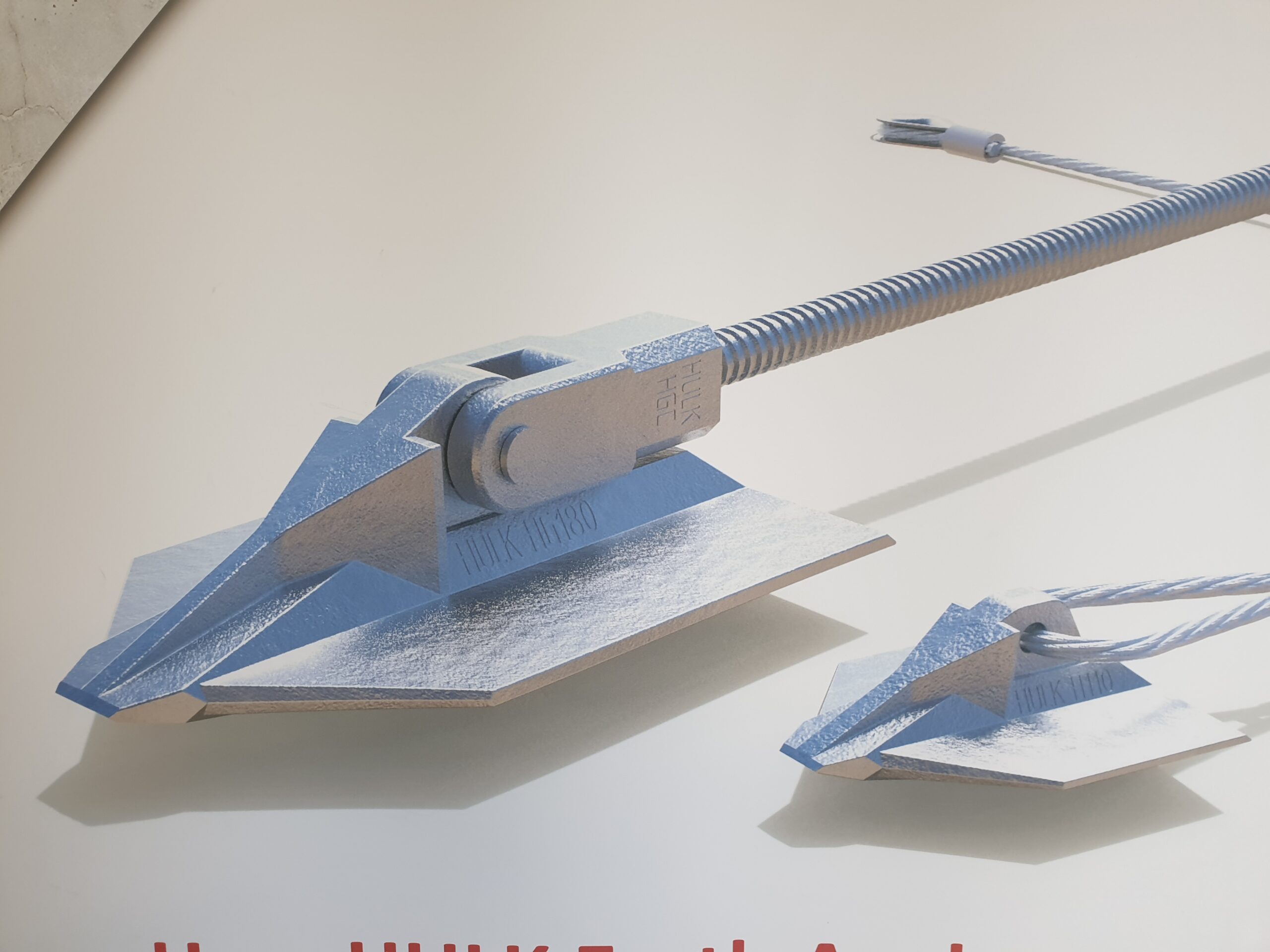Exactly How Sturdy Earth Anchors Job: A Comprehensive Guide to Dirt Anchoring Solutions
Heavy-duty Earth anchors play an important duty in offering stability and support in numerous building applications. By embedding deeply right into the ground, they stand up to side and upright pressures successfully. Various kinds of supports accommodate different dirt problems, making them versatile. Recognizing their technicians and installation techniques is vital for optimizing performance. What variables influence their efficiency, and exactly how do they contrast to standard methods? The solutions may amaze you.
Comprehending Sturdy Earth Anchors
Durable Earth anchors offer as essential parts in various building and construction and landscape design jobs, supplying security and support in tough dirt problems. These supports operate by being embedded right into the ground, where they stand up to upright and side forces. Their design enables protected attachment to structures, ensuring they stay secured versus dirt movement or external loads.The efficiency of sturdy Earth supports largely depends upon the type of dirt and the support's setup deepness. Appropriate installment methods are vital, as they determine the anchor's holding ability. Environmental elements, such as wetness and freeze-thaw cycles, can likewise influence performance.These supports are often used in applications varying from securing fencings and retaining wall surfaces to maintaining temporary structures during adverse weather problems. Understanding the concepts behind sturdy Earth supports is essential for professionals seeking to enhance the sturdiness and security of their tasks.
Kinds of Heavy-Duty Earth Anchors
Different kinds of heavy-duty Earth supports are designed to fulfill certain demands based on soil conditions and project requirements. Helical supports, including screw-like blades, work in softer soils, providing high tons abilities and easy installation. Driven anchors, which are inculcated the ground, appropriate for rough surfaces and supply immediate lots assistance. Tie-back supports are generally made use of in preserving wall surface applications, allowing for lateral support by securing into the ground at an angle. An additional type is the cast-in-place support, perfect for concrete applications, as they are integrated into structures for boosted security. Finally, soil screw anchors are versatile choices that can be utilized in numerous dirt kinds, supplying dependable stress and compression abilities. Each type serves unique applications, ensuring stability and safety and security in building and construction and landscape design tasks. Understanding these choices permits informed decisions in picking the ideal Earth securing option.
The Mechanics of Dirt Anchoring

Comprehending the technicians of soil anchoring needs an exam of different kinds of Earth anchors and their installation strategies. Each support type presents distinct characteristics that influence its effectiveness in different soil problems. Proper setup methods are crucial for making best use of the securing system's stability and efficiency.
Sorts Of Earth Anchors
Earth supports, crucial parts in dirt anchoring systems, come in several types, each created for specific applications and soil problems. The most common types include screw supports, which are turned into the ground, offering strong side resistance. Helical supports feature blades that enable for efficient installment in various dirt kinds, making them suitable for both short-term and permanent applications. Driven anchors, generally made from steel, are inculcated the soil and work in rough or thick settings. Auger supports use a helical layout to facilitate installment in softer soils. Ultimately, plate anchors contain a flat plate hidden flat, distributing load over a bigger location, suitable for applications needing high tons capabilities in cohesive dirts.
Setup Techniques Clarified
Correct installation strategies are crucial for the performance of dirt anchoring systems. The process generally begins with site evaluation, verifying the picked location can support the anchor's tons. After determining the correct support kind, appropriate hole depth and angle have to be established. The installment entails driving the anchor right into the ground using customized devices, such as hydraulic or hands-on drivers, to achieve ideal embedment. Post-installation, tensioning the support is vital to guarantee security; this is often validated with tons testing. Additionally, surrounding soil conditions need to be checked to avoid displacement. Complying with these techniques not just improves the support's efficiency investigate this site yet also prolongs its lifespan, giving trustworthy assistance for various applications.
Applications of Heavy-Duty Earth Anchors
While durable Earth supports are usually associated with building and construction and landscaping, their versatility reaches a selection of applications across different markets. In civil design, they provide vital support for keeping walls, ensuring security in locations prone to soil disintegration. The marine field uses these anchors for protecting anchors and marinas, avoiding motion triggered by currents and tides. In addition, in the telecommunications market, heavy-duty Earth anchors are significant for stabilizing cell towers and various other tall structures versus wind pressures. Agricultural applications likewise benefit, as these anchors can secure frameworks like greenhouses and livestock secure fencing, guaranteeing they stand up to harsh weather condition problems. In eco-friendly power tasks, such as wind ranches, Earth supports play an important duty in protecting wind turbine foundations, enhancing total safety and security and efficiency. This wide variety of applications highlights the flexibility and reliability of heavy-duty Earth anchors throughout different areas.
Benefits Over Conventional Anchoring Approaches
Although conventional anchoring approaches have long been depended upon for stability, sturdy Earth supports supply considerable benefits that enhance performance and performance. One significant advantage is their superior load-bearing ability, which permits them to endure greater pressures without failure. This toughness makes them suitable for requiring applications, such as in construction and utility installations.Additionally, durable Earth anchors are developed for deeper installment, giving better stability in various soil conditions, including loose or sandy soils. Their resistance to deterioration and environmental variables ensures a much longer lifespan and lowered maintenance costs contrasted to standard methods.Moreover, these supports can be installed with very little disruption to the surrounding area, preserving the stability of the landscape. Overall, sturdy Earth anchors present a trusted and efficient service for anchoring demands, exceeding the constraints frequently connected with traditional anchoring techniques.
Installation Process and Best Practices
The installation process for soil anchoring services starts with extensive preparation and site analysis to assure peak performance. Following this, a detailed installment guide offers clear directions for effective implementation (soil anchoring solutions). Complying with these finest techniques is necessary for achieving long-lasting and dependable anchoring results
Prep Work and Site Analysis
Effective preparation and detailed website evaluation are essential action in the installation of soil anchoring options. Before installment, the dirt kind must be examined to identify its bearing ability and suitability for anchoring. Carrying out a geotechnical survey can give essential details about dirt composition, moisture levels, and possible ground movement. Additionally, recognizing existing structures, vegetation, and utilities is necessary to avoid interference during installation. The location ought to be removed of debris and barriers to ensure risk-free access for devices. Climate condition should additionally be monitored, as negative problems can influence both safety and installment efficacy. By thoroughly preparing the site and evaluating all appropriate variables, the possibility of effective support performance is significantly increased.
Step-by-Step Installment Guide
A complete installment process is important for accomplishing ideal efficiency of dirt anchoring options. The installment starts with selecting the suitable anchor type and guaranteeing the site is free from debris. Next, proper hole placement is established based upon lots needs. Once the location is established, openings are pierced to the defined depth and diameter making use of the correct tools. The anchor is then placed right into the opening, seeing to it it is straightened properly. After securing the anchor, soil is backfilled and compressed to boost stability. It is necessary to follow supplier standards throughout the process. A post-installation inspection validates that the anchors are sufficiently located and operating as planned, offering reputable support for the intended application.

Maintenance and Examination of Earth Anchors
Normal upkeep and examination of Earth anchors are important for guaranteeing long-term performance and security. Periodic checks enable the very early discovery of concerns such as corrosion, loosening up, or soil motion. Assessors must check this site out try to find signs of rust or degradation on the anchor elements, specifically at the connection points. Additionally, the bordering dirt needs to be examined for erosion or changes in moisture web content, which can influence anchor effectiveness.It is advisable to establish a routine assessment timetable, ideally at the very least yearly, relying on ecological problems. Throughout examinations, all noticeable components should be cleaned up to get rid of dirt or debris that could hide possible problems. Any signs link of distress, such as turning structures or unusual settling, should motivate instant evaluation. Correct documents of assessments can help in monitoring support performance gradually and promote timely maintenance actions, making sure the supports remain functional and reliable.
Often Asked Inquiries
What Products Are Heavy-Duty Earth Anchors Generally Made From?
Sturdy Earth anchors are commonly constructed from sturdy materials such as galvanized steel or stainless-steel, making certain strength and resistance to rust. These materials provide long-lasting assistance and stability in different soil conditions and applications.
Just How Do Dirt Conditions Impact Support Performance?
Soil conditions significantly affect anchor performance. Aspects such as dirt type, moisture web content, and compaction affect the anchor's grip and security, with natural soils often supplying better resistance than loosened or sandy dirts, influencing general effectiveness.
Can Heavy-Duty Earth Anchors Be Reused After Elimination?
Sturdy Earth anchors can be recycled after elimination, offered they are checked for damages and wear. Proper cleaning and maintenance enhance their long life, guaranteeing efficient performance in succeeding setups when problems enable safe reinstallation.
What Are the Ecological Effects of Utilizing Earth Anchors?
The ecological effects of making use of Earth anchors include prospective dirt disruption, disturbance of local ecosystems, and possible contamination of groundwater. Nonetheless, if utilized sensibly, their advantages usually exceed these worries, advertising stability in numerous applications.
Just how Do I Pick the Right Anchor for My Project?

Comments on “Best Marine Applications for Manta Ray anchors to Secure Structures”